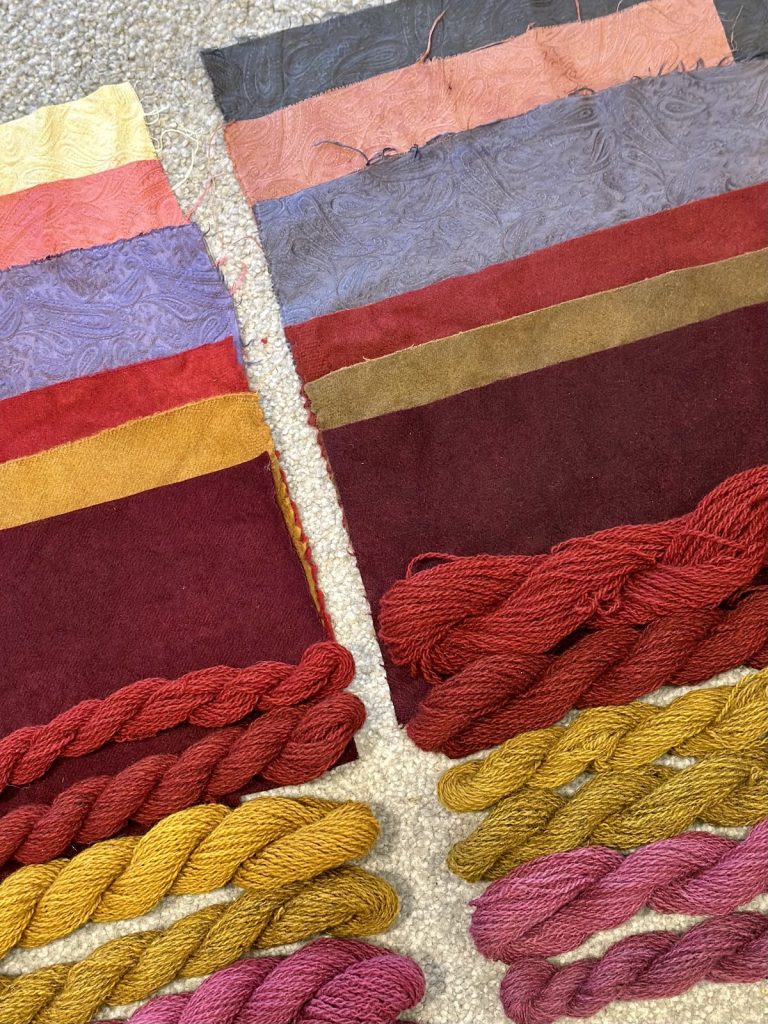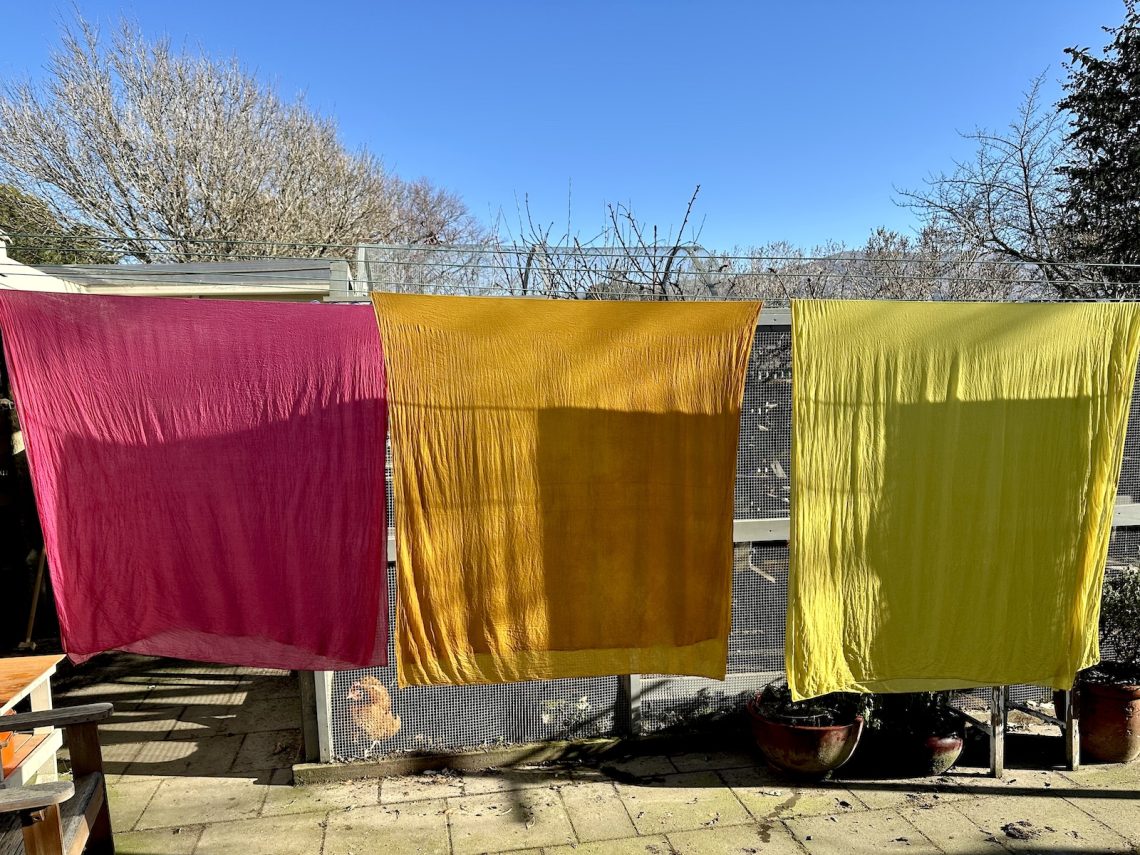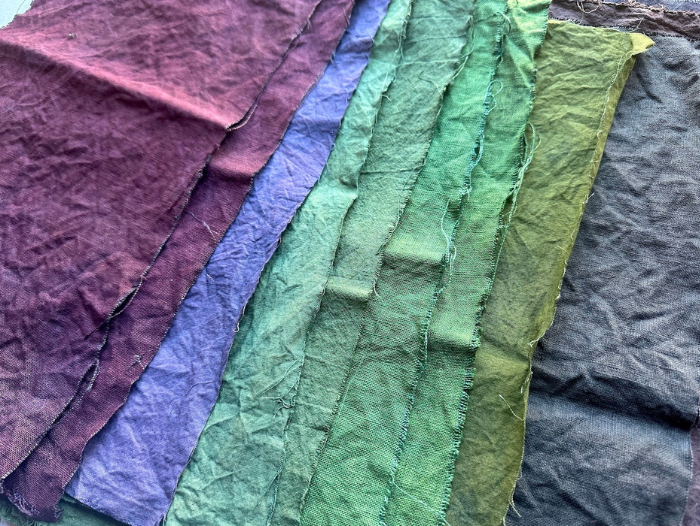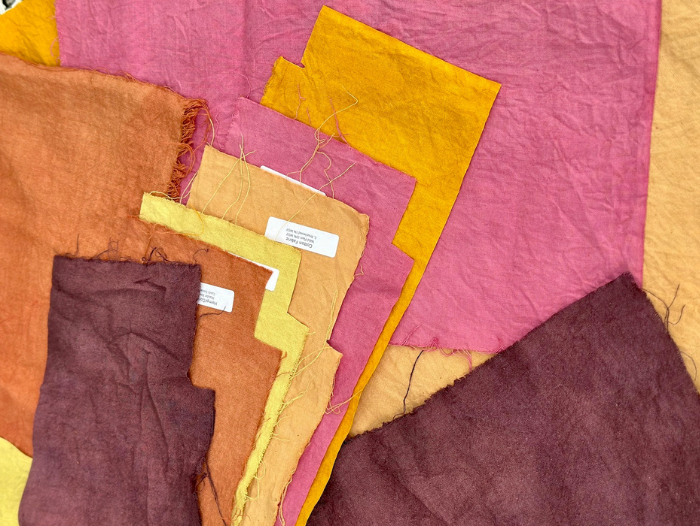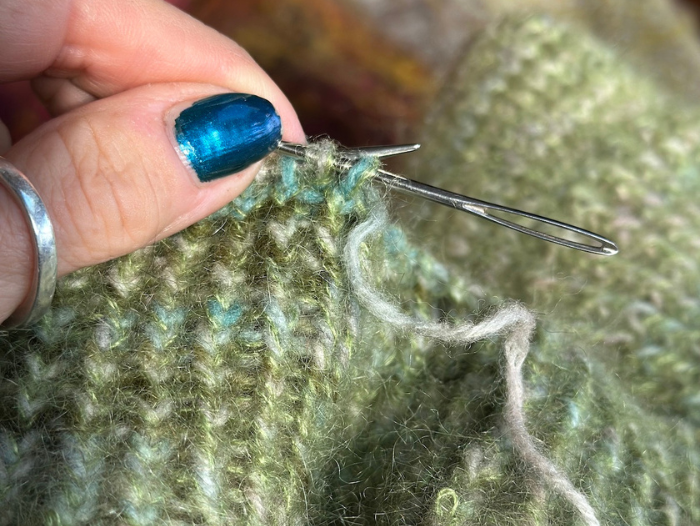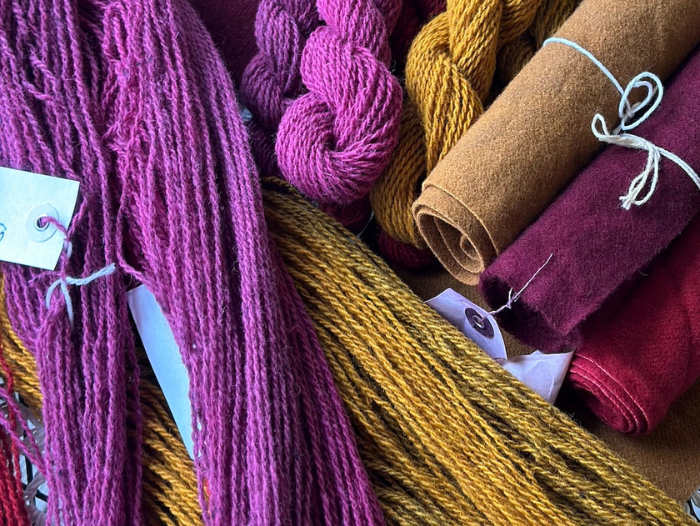Before my exciting week of Echo (more on that in a future post) I did complete my Iron Shift studies. This involved taking pieces already dyed and over-dyeing them with iron to create a new palette. I used the identifying method advocated by Maiwa to sort all of my fibres. I attached a wee bead to each sample and noted the colour of the bead in my journal. That way, after the fact, I can see what original dye colour produced which iron shift colour. Under normal dyeing conditions this would be unnecessary, I think. Usually you are working with one colour at a time on a project and not multiple similar shaded pieces at once. But still, a cool way of identifying cloth.
I measured a 2% WoF iron ferrous sulfate for both cellulose and protein fibres. I started with the cellulose. I did the yellow hued pieces first, then added more iron for the red hued pieces. The red pieces weighed more than the yellow. In their wet state they all looked fairly similar.
Next up were the protein fibres. I have pretty hard water so only used 2% iron and no tannin. I used the same bath from the cellulose shift and just added the iron. That really didn’t work at all. Either the bath was old or I needed the tannin. So for the next lot I made a new bath with the iron and added the myrobalan tannin. This was better, though I did re-dip the wool fabric. I kept the bath on mild heat throughout as it was very cold in my not-yet-finished outdoor dye studio.
My take home message on this was that I worked in conditions that were too cold for the iron to take. The outside temperature was battling with the inside pot temperature. Especially in the protein department (right photo below, iron shifts on the right). Except for the light yellow Myrobalan sample at the top that shifted to grey, everything looks fairly similar. There is much more difference in the cotton and linens. I realise that the iron shift is just a mild alteration – it just seems like an awful lot of work for such a small difference.
The greens and chocolate browns cottons are very pretty, though, so I could be revisiting this. I have to remind myself that I am allowed to not like or enjoy every aspect of this workshop. I give everything a try and over time will decide what works for what I want to produce.


